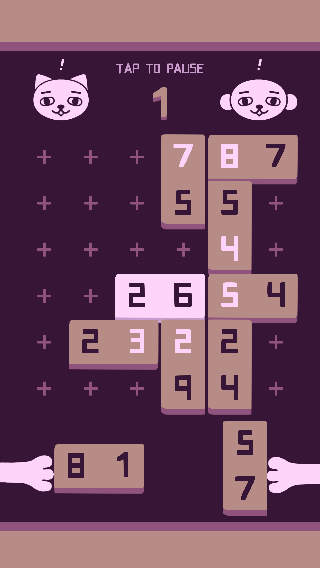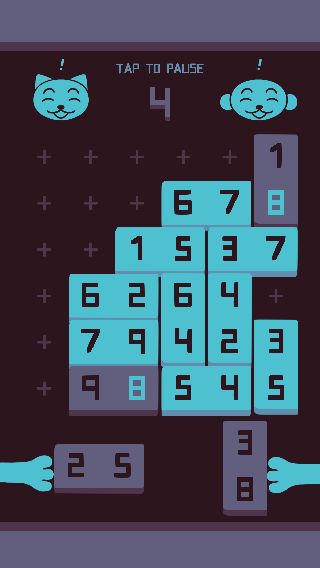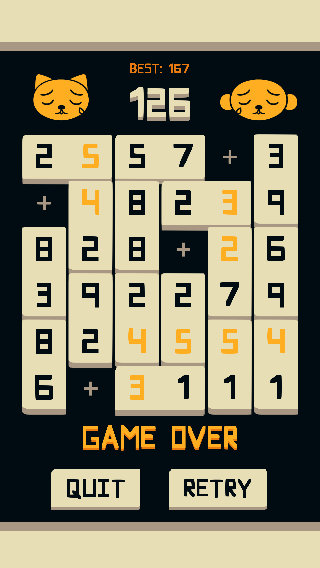
This is the one hundred sixty-fifth entry in the Scratching That Itch series, wherein I randomly select and write about one of the 1741 games and game-related things included in the itch.io Bundle for Racial Justice and Equality. The Bundle raised $8,149,829.66 split evenly between the NAACP Legal Defense and Education Fund and Community Bail Fund, but don’t worry if you missed it. There are plenty of ways you can help support the vital cause of racial justice; try here for a start. Lastly, as always, you may click on images to view larger versions.
Our one hundred sixty-fifth random selection from the itch.io Bundle for Racial Justice and Equality is approaching, offering numbered tiles in its paws. It’s Picky Pop, by Froach Club, and its tagline in the bundle reads:
Pick & Pop with the best of ’em
Very well, Froach Club. Challenge accepted.
Picky Pop looks like it was designed for mobile phones, even though itch.io only offers it for Windows and OSX. But its itch.io page does state that it’s also available from the Apple app store. Running it on Windows, it appears in a tiny window in portrait mode that mimics a phone screen and cannot be resized. I was able to use the old Windows shortcut ALT + ENTER to force fullscreen, but this horribly stretched the image and is clearly not intended. Fortunately, Picky Pop is still playable even when taking up a tiny part of my screen.

It’s a simple game. Two cute animals (a cat and a bear) offer rectangular tiles with numbers on them in their paws. These are kind of like dominoes, with a number on each end, except the numbers can range from 1-9 instead of the traditional 0-6. One is oriented horizontally, the other vertically. Players then pick these tiles and place them on the 6×6 grid, each taking up two spaces. The goal is to align neighboring tiles so that adjacent numbers make a sequence. For example, if one tile has a 6 on one end, I’d try to align another tile such that it puts a 5 or a 7 next to that 6. Once I’ve put sequential numbers next to both numbers on a tile, that tile will light up, and is now eligible to be popped for some points. But I could wait, and try to get more tiles to light up first. If there are a bunch of neighboring tiles that are all lit up, I can pop them all at once for a big combo bonus. If the grid gets filled up with tiles and none can be popped, however, it’s game over.
These rules are easy to grasp, but I found that effective strategies eluded me. I could arrange to pop a few tiles without much trouble, but that leaves the neighboring tiles on the board, and then I had to come up with ways to pop those too. I’m sure there’s a way to strategically build out the board so I can keep popping tiles without blocking future placements, but it never quite clicked for me. It doesn’t help that the replacement tile offered after placing one is random, so there’s no way to predict what’s coming. As I played, I had the feeling that Picky Pop could be really fun and rewarding for players who intuited the best way to plan tile placements and rack up high scores. Alas, this was not me.

But I still found a lot to like. Even when I felt I was bumbling through its tile placements, picking and popping tiles retained a satisfying tactility. I especially like how tiles that are ready to pop occasionally give off a reflective sheen, as if they excitedly anticipate the mouse click. Picky Pop also has pleasing low-fi synth music, and offers many color palette options for its minimalist presentation. I initially thought each just used four colors, but I think I actually count six in total? Regardless, there are some nice purplish-reds and cool blues on offer, as well as some brighter pink and orange schemes.
Picky Pop is definitely work a look, and I suspect that the right player could have a lot of fun with it. If you missed it in the bundle, it’s sold for a minimum price of $5.
That’s 165 down, and only 1576 to go!

Leave a Reply